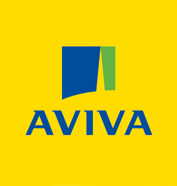Title Page
-
Date
-
Completed by
-
Location
-
To view our Loss Prevention Standard that supports this checklist, please view the following link : https://broker.aviva.co.uk/documents/view/aviva_water_mist_fire_protection_systems_lps.pdf
Water Mist Fire Protection Systems Checklist
-
1. Have insurers and any other interested authorities been consulted and approvals obtained?
-
2. Has a risk assessment been completed of the equipment to be protected?
-
3. Is the equipment to be protected located in a dedicated fire resistant compartment including fire doors and fire shutters protecting window and conveyor openings (at least 1-hour fire rated)?
-
4. Has the necessary design questionnaires been completed by the water mist company, e.g. UK’s RISCAuthority IQ1, IQ2 & IQ3, and approved by insurers?
-
5. Is the water mist designed as a ‘deluge’, ‘sealed’ or ‘local application’ system?
-
•Is the system automatic or manually activated?
-
6. Does the water mist design comply with a recognised national standard (if so, state the name/details of the national standard used)?
-
7. Is the water mist design based on a full fire test completed by a nationally recognised test and research facility (state the name/details of the test and research facility)?
-
8. Is the water mist system identical to that used in the fire test, e.g. the same fire load/commodities, compartment size, ceiling clearance height, obstructions, discharge nozzle (size/manufacturer/pattern/k-factor), nozzle spacing, pipe sizing, pipe layouts, same type water supply and proximity of the water supply to the nozzle array?
-
9. Is the water mist company a well-established fire protection systems company and are they registered/certificated to design, and install water mist systems by a nationally recognised approval and certification authority, acceptable to insurers?
-
10. Is the water mist equipment listed, approved or certificated by a nationally recognised test and research facility (if so, state the name of the certification company)?
-
11. Has the water mist company provided full design drawings and hydraulic calculations to confirm the pipe sizing, etc. (e.g. type of discharge nozzle, k-factor, angle of discharge, nozzle locations/spacing’s, nozzle discharge rate, pipe sizing pipe layout and water supply details, size, capacity, and duration)?
-
12. Is the water supply duration known and assessed as acceptable for the type of protection provided (state the duration period)?
-
13. Does the water supply have a standby system that will automatically supply the water mist should the main supply fail or be isolated?
-
14. Is the water supply (delivery and supply) isolation valve secured in the open position with chains and padlocks, and is the supply reliable?
-
15. Is an alarm fitted to signal if any isolation valves (normally open) are closed?
-
16. Is this alarm tested weekly?
-
17. Are any electronic solenoid valves fitted to the water mist system designed to fail safe (open on loss of power)?
-
18. Does the water mist system have any safety interlocks that will automatically shut down the equipment and fuel supply, stop ventilation systems, extract fans or conveyor systems and close fire doors/shutters upon activation of the water mist?
-
19. Is clear uninterrupted access maintained at all times to the control equipment?
-
20. Is there a regular weekly test of the water mist system, alarm signalling and its interlocks with records kept of the date, time, results, and the name of the test engineer?
-
21. Is there a regular weekly inspection of the system in accordance with the manufacturer’s recommendations, with dates, times and results of the inspections, including the name of the test engineer recorded?
-
22. Are all the water mist nozzles kept clean, clear of debris and obstructions?
-
23. Is there regular servicing and maintenance of the system under contract with an accredited installer in accordance with the manufacturer’s recommendations with dates, times and results of the inspections, including the name of the engineer recorded?
-
24. Is there an impairment notification procedure in use which is agreed with insurers?
-
25. Is there a managing change notification procedure in use which is agreed with insurers?
-
26. Have all necessary risk assessments been reviewed and updated following the installation of the water mist system, e.g. fire/security/housekeeping/health and safety, etc.?
-
27. Has the site’s emergency plan been reviewed and updated following the installation of the water mist system?
-
28. Has the business continuity plan been reviewed and updated following the installation of the water mist system?
Sign Off
-
Additional Comments
-
Completed by (name and signature)














